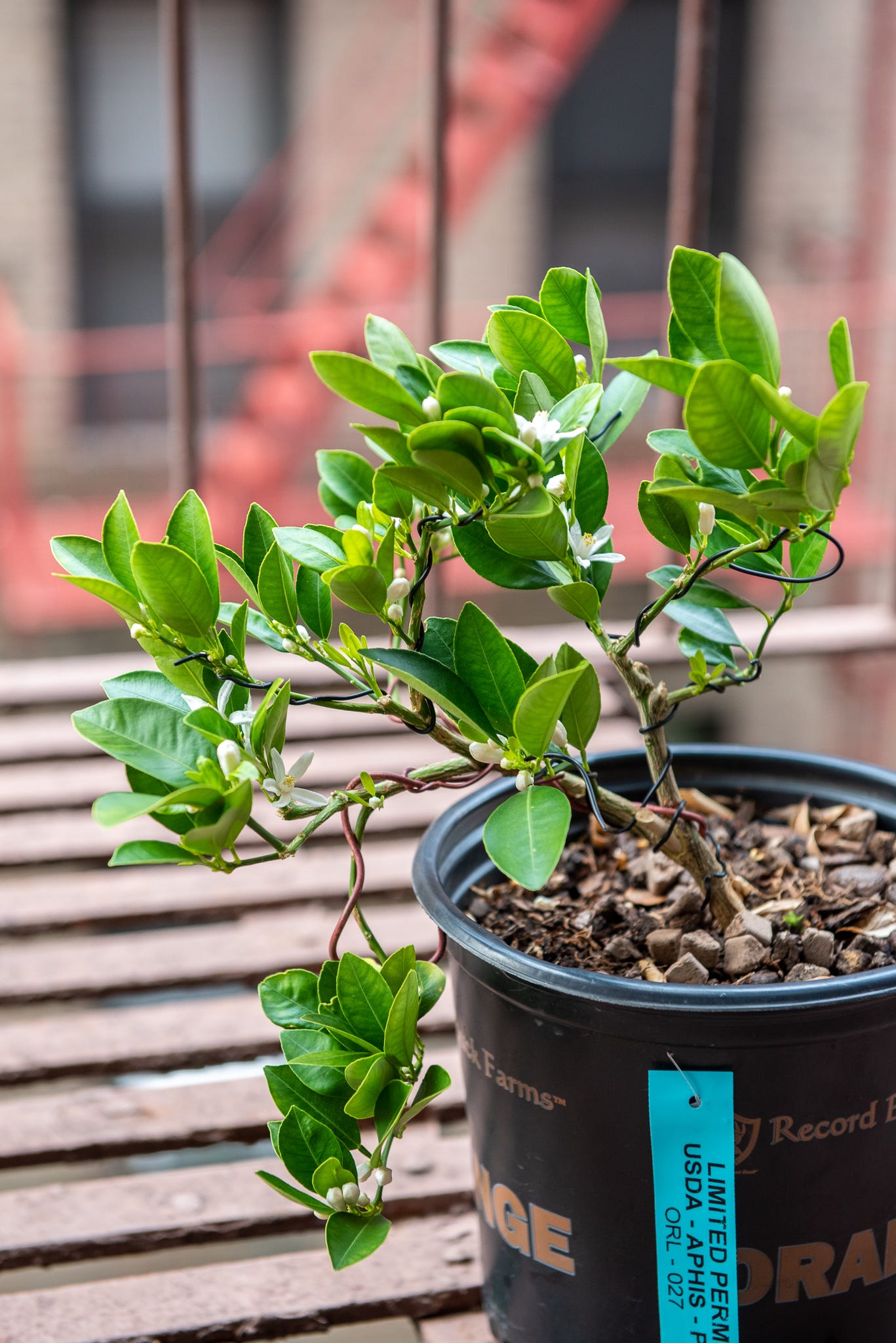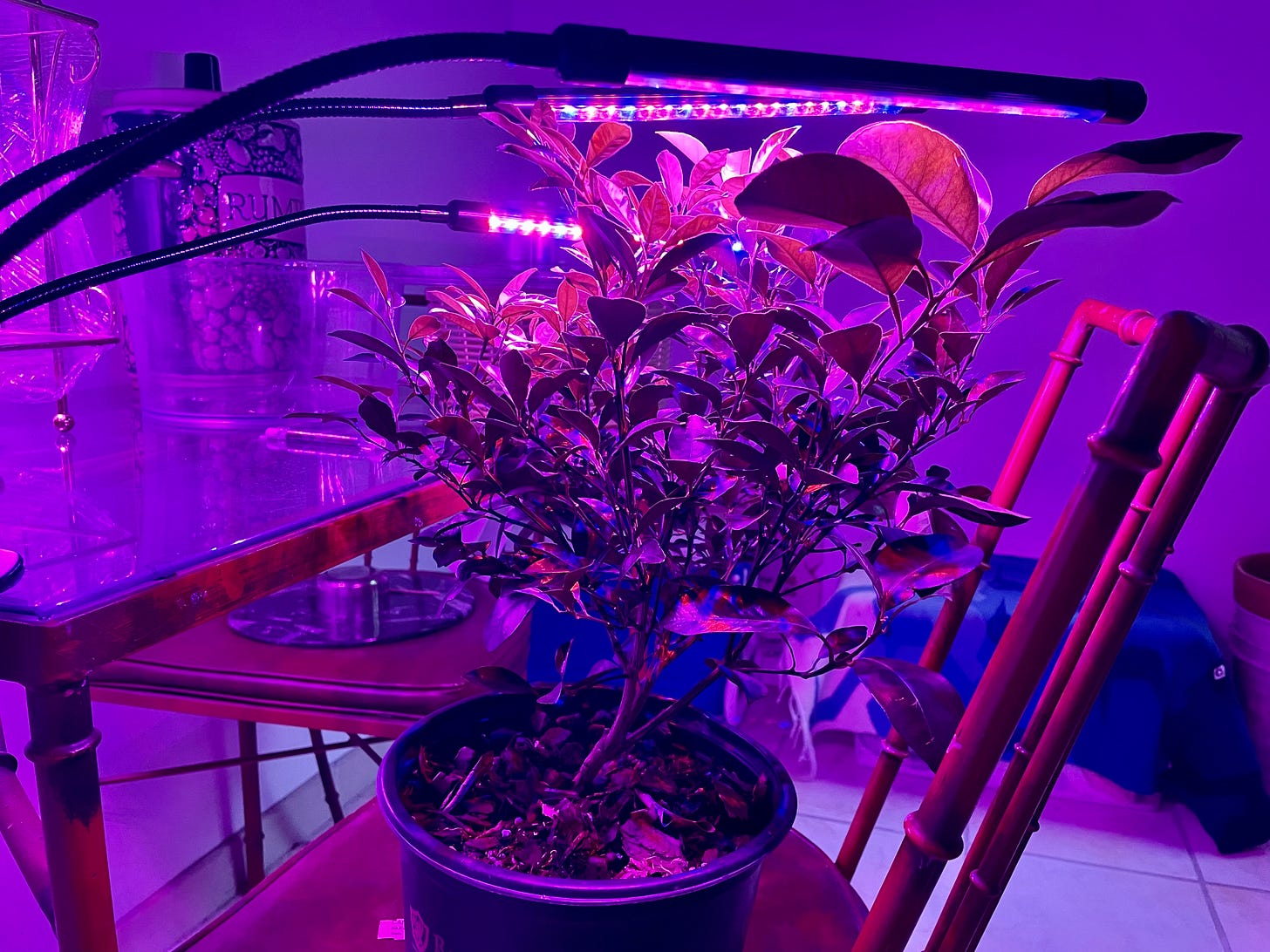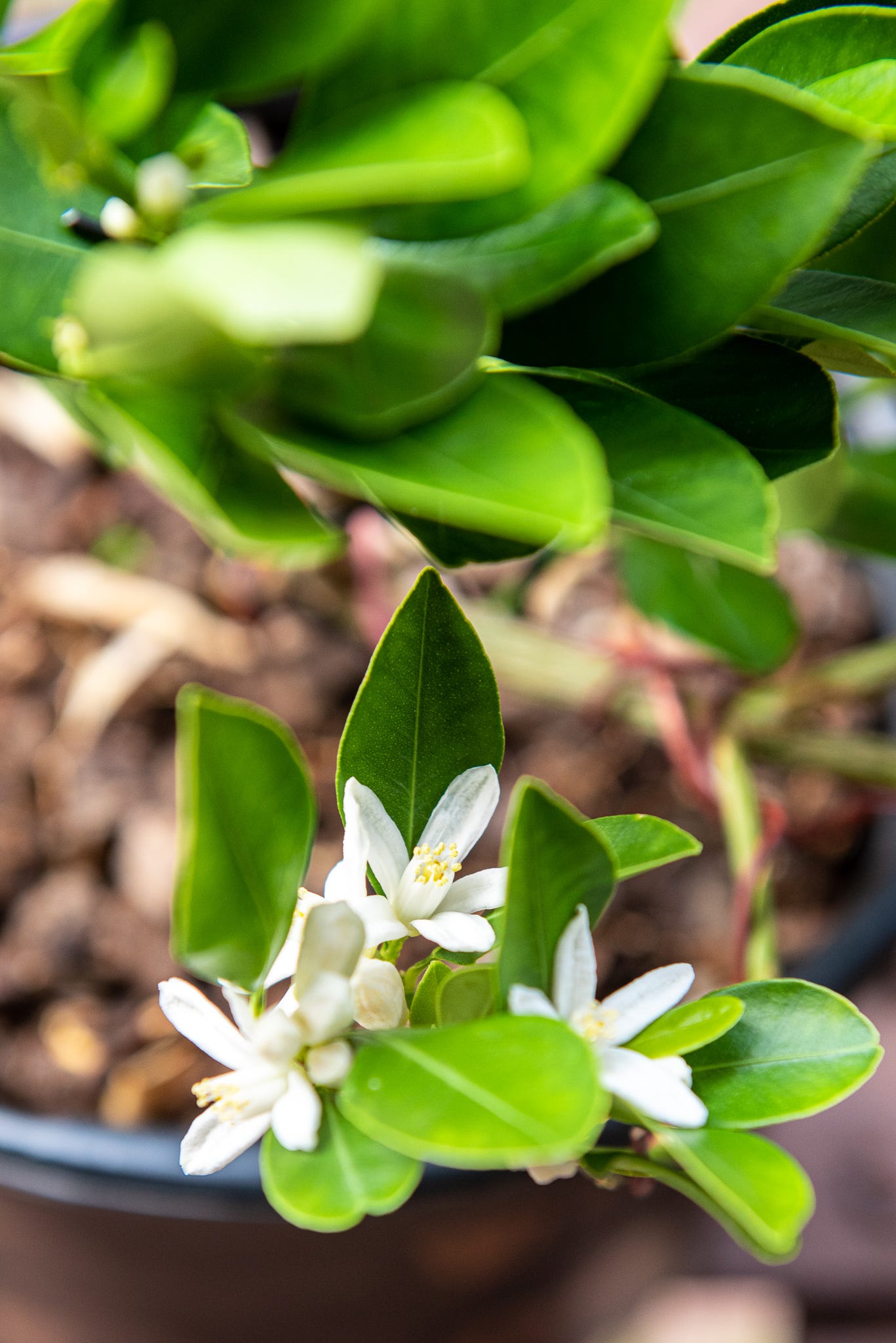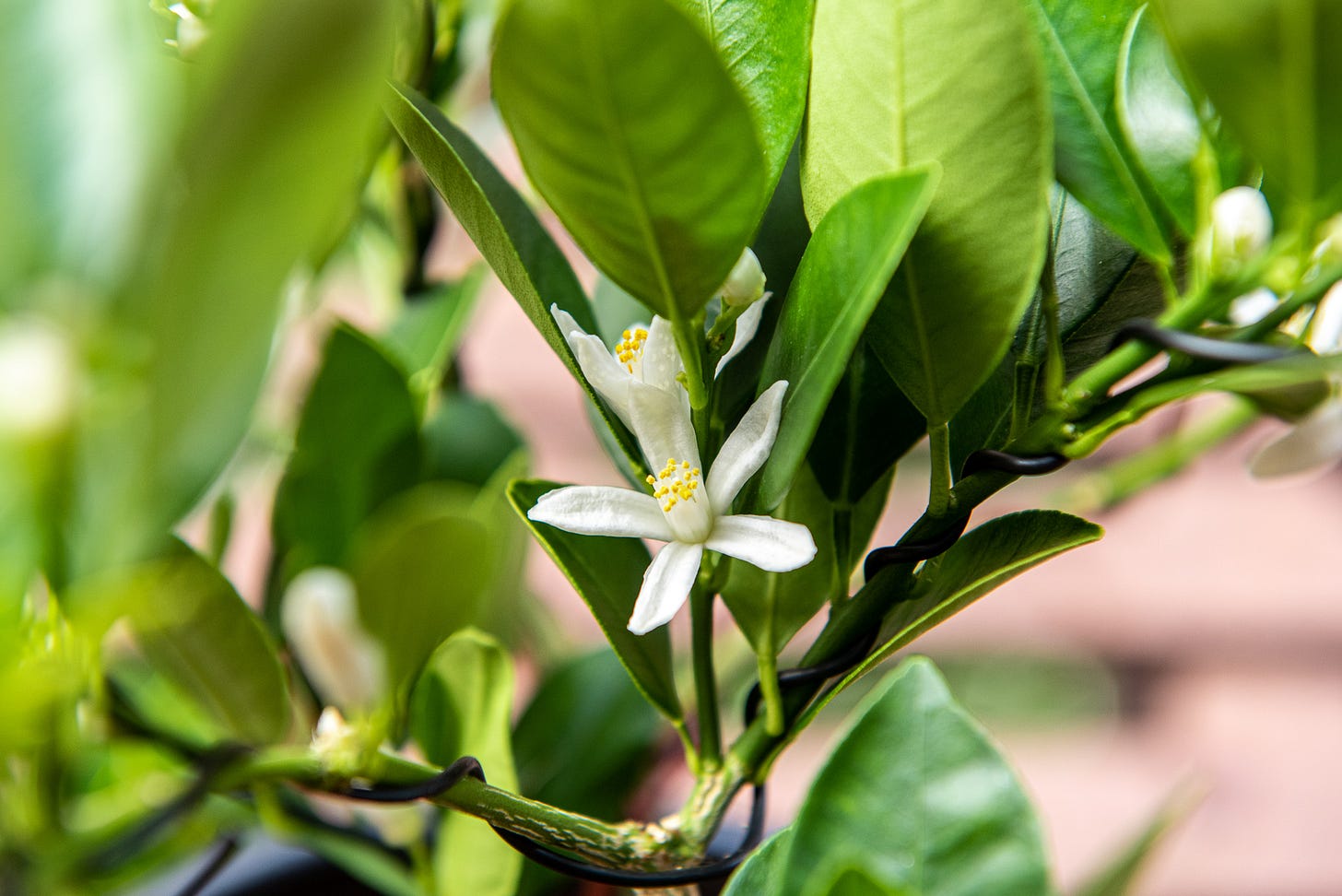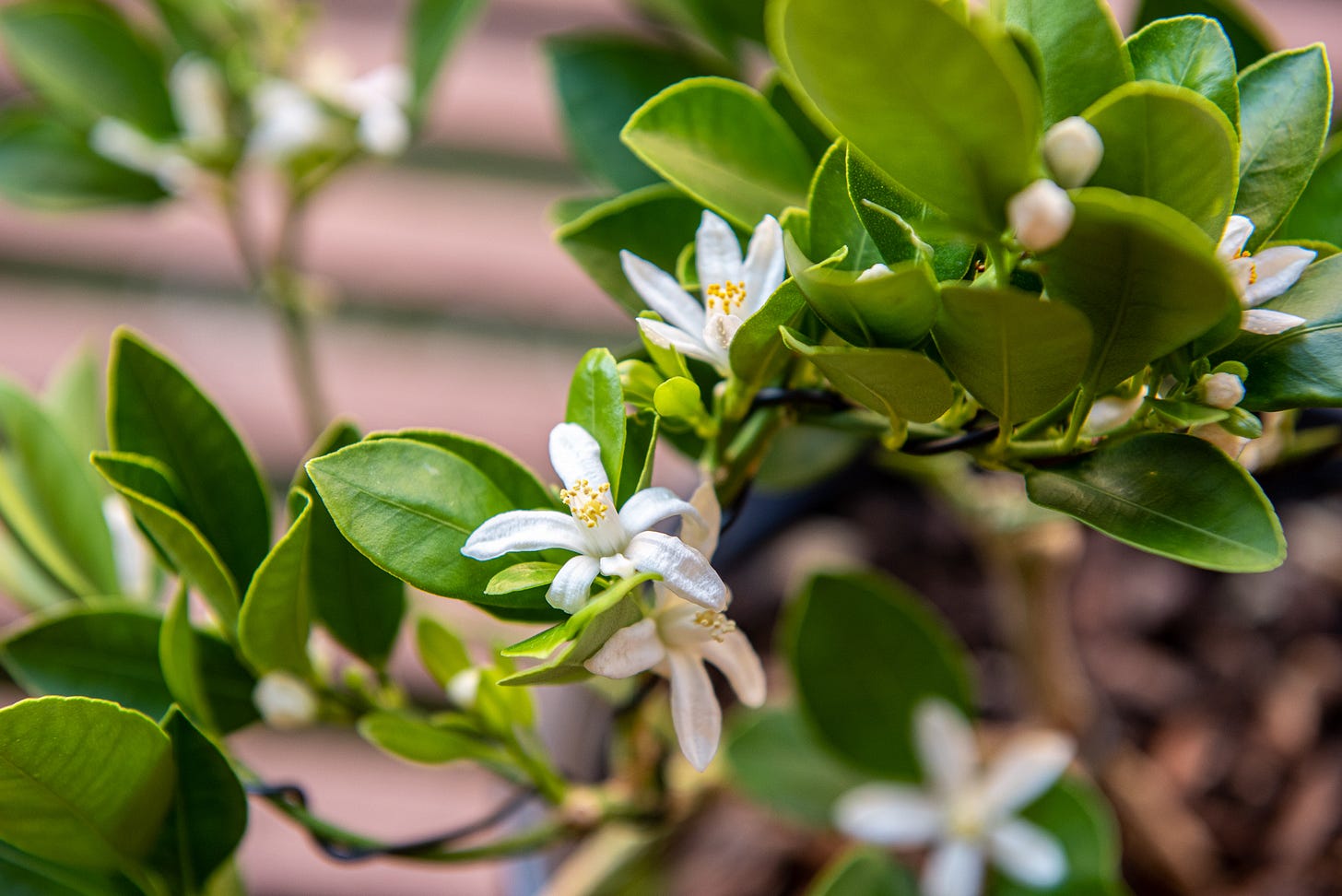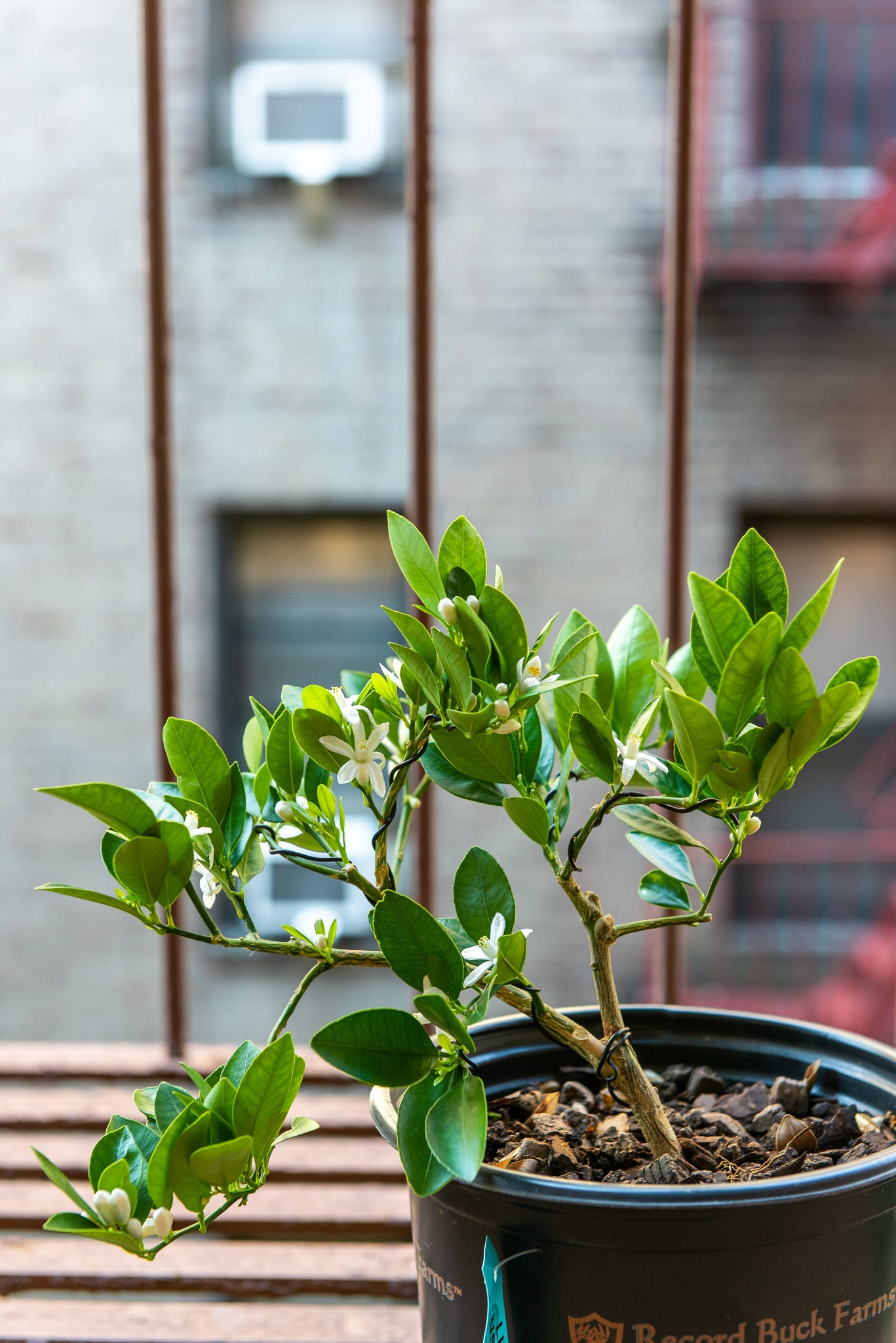A calamansi cascade
I've settled on a design. Is it a pre bonsai yet?
Like most varieties of citrus, the dwarf calamansi tree is a hybrid. Citrus x microcarpa is born from two parent species: the kumquat and the mandarin orange. Trees hybridize like this in the wild all the time—that’s how some commercial varieties are discovered—but the hybrids are often unsuccessful, genetically unreliable, sterile, or unable to find a pollination partner.
Calamansi is a wild success in this regard. It grows vigorously on its own roots, so it doesn’t need grafting onto hardier stock. It flowers through the year if you treat it right. The tree is even self pollinating, so it grows fruit all by itself.
The qualities that make calamansi a successful hybrid also apply to its bonsai potential. Calamansi is one of the few citrus varieties you’ll find at nurseries that doesn’t have an unsightly graft scar. Their dense, shrubby growth helps them form ramified branches, and the leaves are relatively small for a citrus.
I bought this calamansi last fall at Lucky Flower, my favorite plant shop in Flushing. As you can tell from the purple haze, this was back before I upgraded my indoor setup.
This is my first citrus and citrus make squirrelly bonsai subjects. So most of my time with this tree over the past year has been spent watching it grow.
I’ve snipped branches here and there, never with any clear idea of what I was doing. The tree has three trunks sprouting from a single knuckle. It took me months to decide which trunk to chop. Then I muddled my way through awkward two-trunk ideas for a few more months.
The calamansi continued to flower, unbothered.
People who practice yamadori find naturally dwarfed trees out in the wild, then dig them up and bring them home. For the rest of us, the closest thrill is finding cheap nursery stock at the hardware store and plant shops like Lucky Flower.
For as long as I’ve been “seriously” doing bonsai I’ve envied those with shelves of their own styled nursery stock pre bonsai. Forget a finished bonsai; the pre bonsai look is an aesthetic all its own. The confidently coiled wires. Slender branches that are mere skeletons of an eventual design. A tree full of promise with its whole life ahead.
The pre bonsai aesthetic shows off your craft in contrast to raw nursery material. Even if others have worked with your tree for basic pruning, you’re the first to approach it with bonsai in mind. The result is a distillation of your technique rendered against a passive natural body.
This is of course bullshit. I’m looking to collaborate with nature, not impose my will on it. And who’s to say my work is even my own, just because it comes from my hands? Many of my decisions for this tree were directly influenced by others I’d seen online. The design I’ve settled on for the calamansi is a semi cascade, a well defined bonsai style. How can I call my work original if it readily conforms to a classic design?
Individual artistic expression doesn’t exist. It’s an illusion. Same goes for most of the citrus we eat if we stop helping and abandon the trees to their own destiny.
Anyway, at long last, I have a nursery stock pre bonsai to call my very own. And it’s in bloom.
You know what? I’m proud. Look at that smorgasbord of blooms and buds. I’ll even call this a competently designed tree with a promising future. Funny, I have no idea what to expect for myself in the next few years, but I can already start making plans for the tree.
When it’s more mature, I’ll let some flowers turn into fruit, then load the tree up with fertilizer to plump those suckers up for a photo similar to this one, so I can show off the tree, heavy with wee calamansi fruits, to other bonsai people on forums. Which is of course the real point of the whole endeavor.
Tree reading
Reforestation initiatives aren’t just ineffective against climate change. Poorly planted monocultures eventually die en masse, and can actually cause more harm than good. [Vice]
Please enjoy the calamansi entry in this charming illustrated glossary of Filipino food by the artist Albert Balbutin Jr. [Filipino Food Art]

